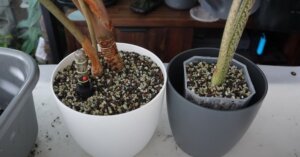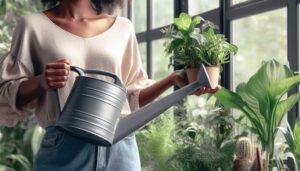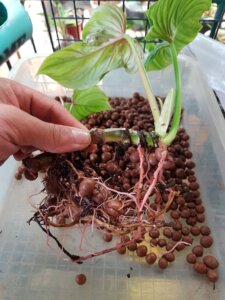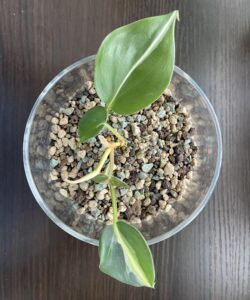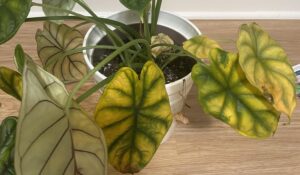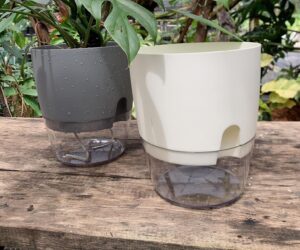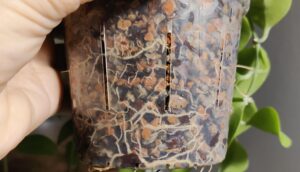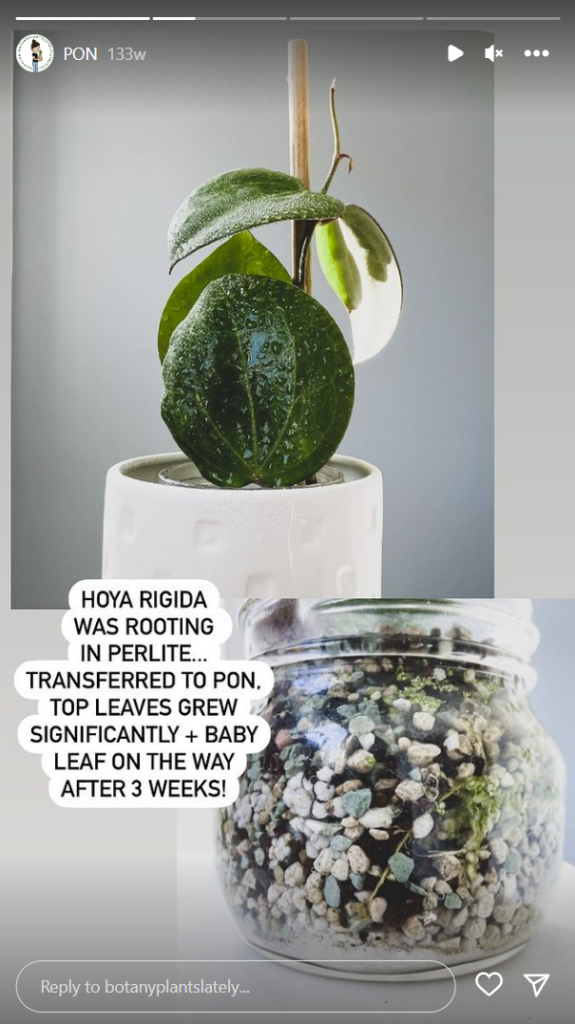Latest Pon-related articles
The first time Lechuza-Pon caught my eyes was through r/houseplants, a well-known community on Reddit. It’s the secret sauce for avoiding over-watering and the dreaded root rot. Sounds like a dream, right?
As my own collection of indoor plants started to flourish (yes, pun intended), my curiosity got the better of me. My first experiment with Pon was in propagating some stubborn Hoya plants that just wouldn’t root, even with my go-to mix of fern fiber and CCS rooting formula.
Switching to Pon was a game-changer.
So, let’s dive into what makes this ‘magic medium’ tick, its ups and downs, and what you should know before giving it a try.
Summary
Why you should use Pon for your Houseplants
Pon, especially the Lechuza brand, is a game-changing plant substrate that’s making waves in the plant community. It’s a soil alternative made of mineral stones like pumice, lava rocks, and zeolites. This mix offers an ideal air-to-water ratio, making it perfect for a variety of plants, from Hoyas to cacti.
Key Benefits:
- Less watering needed
- Reduced plant care time
- Fewer pest issues
- Promotes faster growth
- Lowers risk of root rot
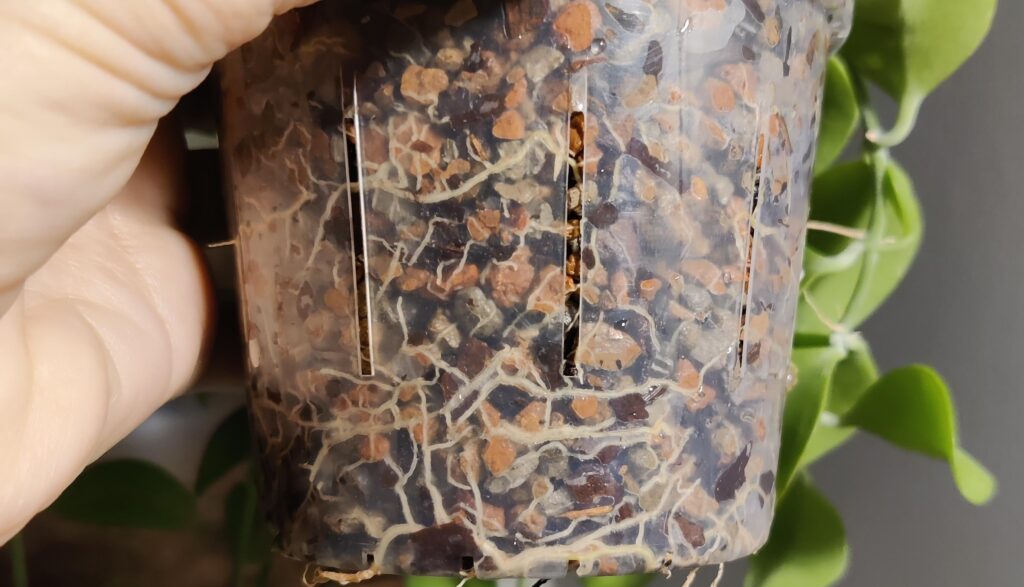
What Exactly is Pon Medium?
When it comes to Pon, the brand that stands out is Lechuza. But what is Pon, really? It’s a term derived from ‘Semi Hydro-PON-ics’ and serves as a popular alternative to Leca, especially for growing and propagating plants.
You can either mix it with your regular potting soil using the following recipe or use it as a standalone medium.
DIY Pon Recipe: 4 parts of Pumice, 2 parts of Lava rocks, and 1 part of Zeolite.
Pon resembles tiny stones or gravel and serves as a soil substitute. While there are slight variations among brands, Lechuza Pon sets the standard. It’s a blend of pumice, zeolites, lava rock, and a smidgen of slow-release fertilizer.
Lechuza Pon boasts a ‘golden ratio’ of 45% water and 55% air. For plants like aroids and hoyas that love well-draining substrates, this is a breath of fresh air—literally. But it’s not just for aroids and hoyas; Bonsai, cacti, and succulents also thrive in Pon.
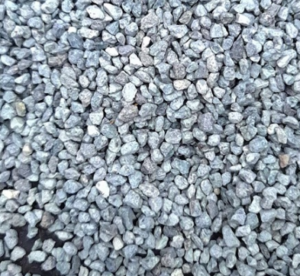
Zeolites
Zeolites might be a new term for many, but they’re a key player in Pon. These volcanic minerals have the unique ability to trap harmful substances like lead and nickel.
They’re also excellent at retaining water and balancing pH levels, making them a crucial part of the Pon mix.

Lava Rocks
Lava rocks, also known as scoria, are exactly what they sound like—volcanic rocks filled with tiny holes that absorb excess water and nutrients.
They’re often used as a base layer in terrariums and pots without drainage holes and are a common addition to mixes for bonsai, succulents, and cacti.
Fertilizing with Pon: What You Need to Know
Even though Lechuza Pon comes with a bit of slow-release fertilizer, you’ll still need to supplement it over time.
I personally use a specialized root fertilizer designed for semi-hydroponics.
If you don’t have specialized fertilizer, you can skip it for about three months after switching to Pon and then start a ‘little and often’ fertilizing routine.
Mixing Pon with Potting Soil: The Three Methods
Pon is incredibly versatile, and you can use it in three primary ways:
- 25% Method: This is for drainage, especially in pots that lack drainage holes. A layer of Pon at the bottom does the trick.
- 50% Method: This method involves using Pon as a protective layer against pests like fungus gnats. It’s a halfway approach between traditional soil and Pon.
- 100% Method: This is for those who want to go all-in. It involves removing all organic matter and planting solely in Pon. This method is particularly popular among those who are sensitive to organic irritants like fungus spores.
The Versatility of Pon
Pon can also be mixed evenly into soil or potting mix to make it heavier and more free-draining. This makes it a popular choice for a wide range of plants and gardening styles.
So there you have it—the lowdown on Pon, the ‘secret substrate’ that’s taking the indoor plant world by storm. Whether you’re a newbie or a seasoned plant parent, Pon offers a range of benefits that can simplify your plant care routine and potentially lead to healthier, happier plants.
Why Pon is the Go-To Medium for Plant Collectors
The Magic Behind Lechuza-Pon
Lechuza-Pon has become the talk of the town among plant collectors and influencers, and for good reason. This premium plant substrate is made of top-notch mineral stones that offer a host of benefits.
According to Lechuza, their Pon mix is a game-changer when it comes to pest control, especially against nuisances like fungus gnats. It also ensures even nutrient distribution and maintains an ideal air-to-water ratio of 55% air and 45% water.
Lechuza touts that their Pon substrate keeps plants healthier compared to traditional soil. It retains its airy structure over time, reducing the risk of diseases and ensuring long-lasting benefits for your plants.
The Longevity of Lechuza-Pon
One of the standout features of Lechuza-Pon is its longevity. According to the company, you can use their Pon for years without needing to replace it. That’s a big win for those looking for a sustainable and low-maintenance option.
What Plant Collectors Are Saying about Pon
Eula Nazareth
First off, let’s give a shoutout to of @botanyplantslately pure genius, right?
Eula first got wind of Lechuza-Pon in early 2020 and decided to give it a try due to her expanding plant collection and busy schedule.
She was on the hunt for a low-maintenance system, and Pon seemed to fit the bill.
Eula transitioned some of her struggling Hoya plants to Pon and saw remarkable results.
For instance, her Hoya Wayetii, which had been dormant for a while, showed significant leaf growth within weeks of switching to Pon.
She also found that cuttings rooted faster in Pon compared to other mediums.
Eula noted that Pon offers a balanced distribution of moisture, unlike soil, which can be dry at the top and wet at the bottom.
She also found that Pon reduced her plant care time, allowing her to enjoy her plants without stress.
Agatha Isabel
Agatha started exploring Pon in 2020, particularly because many Hoyas are native to the Philippines, her family’s homeland. She was tired of the mess soil was making and was intrigued by Pon’s benefits.
Agatha decided to experiment with Pon as a soil alternative and found it to be a more efficient and cleaner option. She now recommends Pon, LECA, and semi-hydroponics to her clients who travel frequently as these systems are easier to manage.
Agatha has successfully transitioned most of her Hoya collection and some of her philodendrons to Pon.
She even suggests that monsteras could thrive in it. However, she notes that Pon can be bulky, especially if you’re mixing it yourself.
Final Takeaways
So there you have it, the comprehensive guide to Pon, the plant substrate that’s revolutionizing indoor gardening. Whether you’re a newbie or a seasoned plant parent, Pon offers a range of benefits that can make your plant care routine simpler and more effective.
The Upsides
- Less frequent watering
- Reduced plant care time
- Fewer pest issues
- Faster plant growth
- Lower risk of root rot
The Downsides
- The initial cost may be a factor for some
After hearing from real plant parents and considering the benefits, I’m convinced that Pon is worth a try. I plan to experiment with it for some of my own 70+ plants.

